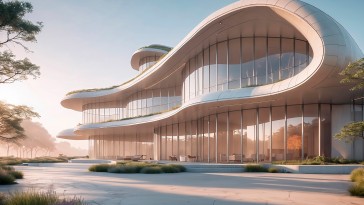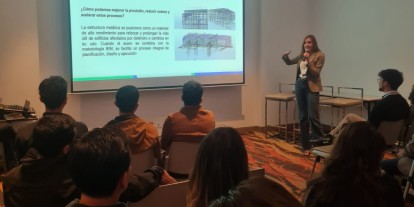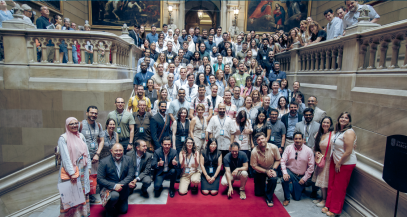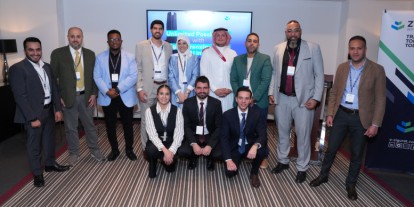
Barcelona Becomes the International Epicentre of Innovation in Architecture with the Celebration of the ZIGURAT Summit 2025
Categories
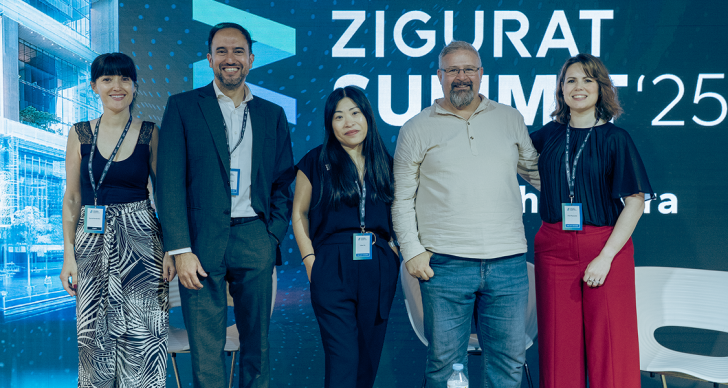
The third edition of the ZIGURAT Summit, ZIGURAT's in-person international congress, brought together over 150 architects and engineers in Barcelona to discuss the new era of AI in Architecture and Construction. Held as part of Student Week, the Summit focused on artificial intelligence applied to architecture, construction, and urban management, with a distinctly practical and strategic approach.
The event, hosted at the Valkiria Hub Space in Poblenou (Barcelona), was divided into two blocks. The first, in Spanish, opened with the talk “Beyond the Hype: Technical and Human Challenges of AI in BIM”, delivered by Fernando Iglesias, Head of Innovation at Kronos and Director of the Máster en IA para Arquitectura y Construcción, who explained—backed by data—the reasons behind the current AI boom. “We are at a moment of absolute convergence, where highly developed technologies such as advanced robotics, cloud computing, big data and storage come together,” he said.
Iglesias urged the sector to move towards true interoperability between systems and tools. He also highlighted the need to prepare teams to change the way they think, design, and collaborate. “Technical leadership must be accompanied by ethical leadership: we need to train professionals to make responsible data-driven decisions,” he added.
Next, Carles Farré, co-founder of AECOTECH, presented “AI Agents On-Site: Your New Digital Allies”, showcasing how artificial intelligence can automate construction site supervision using drones, scanners, and active digital twins. According to Farré, “AI won’t take your job, but a person using AI will.” He reviewed how the AECO sector had already experienced a first wave of digitalisation with tools such as BIM, cloud systems, and ERP, improving productivity. Now, he said, “we are on the brink of a new stage, where AI agents will be capable of understanding processes, making decisions, and supporting us in project and site management.”
Farré emphasised that data is the key to this shift. “We are heading towards multi-agent environments where intelligent systems will facilitate communication between data, companies, sites, and teams,” he explained. This will enable real-time problem-solving and optimise workflows in a connected, efficient way. In this new scenario, the professional role will not disappear but will evolve. “We need versatile, integrative profiles capable of working side by side with AI,” he concluded.
The last session of the Spanish block was led by José Javier Laborda, Senior BIM Consultant at Ingecid, with his talk “Empowering the Expert: When Design Meets Automation”. Laborda presented a real case of digital transformation applied to a coastal engineering project in Santander. The challenge was to modify the topography of a beach using BIM methodology, introducing this new workflow to a company with deep technical expertise but no prior experience in digital modelling. Thanks to a flexible, scalable solution adapted to the team’s pace of technology adoption, they reduced processes from weeks to just minutes. “From the first month, iterations were happening and decisions were being made with sound judgement,” said Laborda, sharing figures such as up to 98% time savings in modelling, 80 automatic iterations per week, and 87% fewer human errors caused by mislinked drawings.
Lilian Ho, Vicki Reynolds and Chris Dymond
The second block, delivered in English, featured three key presentations. Lilian Ho, Director of the Master's in Artificial Intelligence for Architecture & Construction, presented “Digital Transformation through AI”. She explained the differences between AI and autonomous systems, highlighting that while AI learns and automates tasks, autonomous systems make decisions and act without human intervention.
She stressed the importance of combining both to enhance safety, efficiency, and site management. “Integrating AI and autonomous systems allows 24-hour project monitoring, resource optimisation, and real-time data-driven decision-making,” she said.
Ho clarified that this technology does not replace workers but transforms their roles, requiring skilled professionals to handle these tools across all construction phases. She concluded by underlining how these technologies contribute to sustainability, waste reduction, and tangible benefits for the sector.
Vicki Reynolds, Technical Director at One Creative Environments, ambassador for Women in BIM, and Director of the Master’s in Global BIM Management, discussed “BIM and the Impact of Lean”. Reynolds emphasised BIM’s central role as the structural foundation of all digital innovation in the AECO sector. “Artificial intelligence, smart assets, digital twins, and automation can only develop on a solid layer of data—and that starts with BIM,” she said.
She highlighted that good information modelling not only organises and validates data but also enables interoperability, scalability, and reliable automated decisions. “Without proper information management, you risk creating ineffective automation or flawed analyses that compromise project efficiency,” she warned.
Reynolds illustrated her talk with a practical case where AI was used to convert drawings into 3D models, integrating IoT sensors and real-time data. “Every innovative project must start by defining information requirements early on, or any attempt to scale or integrate new technologies will be costly and inefficient,” she concluded.
Finally, Chris Dymond, founder of Unfolding and Director of the Master's in Global Smart City Management, delivered “AI and Digital Twins: Advancing AECO and Smart Cities”. He explained that while smart buildings are key, smart cities require a broader, more connected vision. Dymond stressed the importance of open standards and interoperability to flexibly integrate technologies, stating that “smart building technologies are continuously evolving, with new applications and ways of using data constantly emerging.”
For Dymond, the success of a smart city is measured by how it improves people’s lives, sustainability, and resilience rather than just technical data. “If there is one area where I believe AI should be applied at the interface between smart cities and smart buildings, it’s in using AI tools with the SRI standard to understand how intelligent our city is, based on the intelligence of each building within it,” he said.
The day also featured two round tables followed by engaging discussions between speakers and the audience. The first included Vivian Sirito, BIM Coordinator at GCA Architects; Carlos Rothmann, AI/BIM Coordinator at Mesura; Gerald M. Guzmán, BIM Designer at DNA Barcelona Architects; and Marc Vergé, Head of AI Projects at ITEC. The second featured Vicki Reynolds, Lilian Ho, and Chris Dymond, moderated by Bruno Mota, Associate Director at Assystem and Director of the Master Internacional em Gestão de Projetos na Construção.
SUMMIT 2025 and Student Week
The ZIGURAT Summit took place within the framework of Student Week, a week of activities for ZIGURAT alumni aimed at fostering connections, learning, innovation, and collaboration among AECO professionals.
Over four days, attendees enjoyed an intensive programme combining advanced training, visits to innovative projects, and networking activities. Among the highlights was a start-up creation workshop where participants worked in teams to develop entrepreneurial proposals. Winning projects were awarded a diploma and personalised mentoring at the Barcelona Contech Hub, a support space for disruptive initiatives in construction technology.
The agenda also included speed networking sessions, keynote talks, and an architectural tour of Barcelona guided by professionals involved in the city’s urban transformation.
